Lighting in the bathroom: DIY LED lighting
Proper lighting in the bathroom decorates the interior and creates a pleasant atmosphere. Increasingly, when organizing the lighting of the bathroom, LED devices are used - they are convenient to install, safe and cost-effective.
Before proceeding with the installation of the backlight, you need to learn more about the specifics of electrification of damp rooms, study the rules of electrical safety, draw up a wiring plan, choose lamps and other elements of the system. All these points are detailed in our article.
In addition, we described the procedure for arranging LED backlighting, identified the main stages of installation and connection of LED strips.
The content of the article:
Electrics and high humidity
A large amount of water, frequent changes in temperature, humidity and hot steam, condensation - all these conditions typical for the bathroom create an increased danger when using electricity in its limits.
To ensure the safety and proper operation of electrical appliances, in such rooms during installation, electricians use only elements protected from exposure to steam and water.
Moisture-proof terminal blocks are perfectly suitable for the bathroom, which are able to tolerate high humidity for a long time, and at the same time they noticeably facilitate installation.
Installation of any junction boxes and nodes should be carried out strictly outside the bathroom. Inside the bathroom, as far as possible, avoid connecting individual wires.
If for some reason it is still necessary to do the so-called twisting, then each such place should be protected as thoroughly as possible with insulating materials from moisture penetration. Most often, the backlight in the bathroom is organized using low-current systems with a power consumption of 12 V.
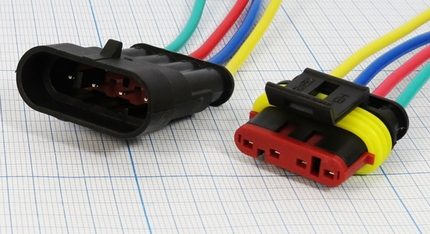
It is almost impossible to get any dangerous electric shock from such an LED lamp even at high humidity.But this does not mean that you can forget about security measures. All LED devices must be earthed without fail.
The lighting system must be connected to residual current device, which is triggered when a current leak occurs and interrupts the power supply to a specific object.
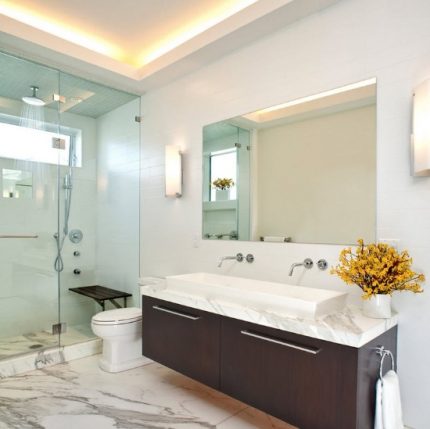
In bathrooms it is recommended to organize a separate power supply line to each object or group of objects. Usually a line is allocated for outlets and separately for lighting devices.
If the bathroom is supposed to use powerful equipment (automatic washing machine, hot tub, electric sauna, etc.), then for each such object a separate power line should be made. And for each such group of electricity consumption, it is recommended to install a separate RCD.
Detailed instructions for installing the outlet for the washing machine are presented in this article.
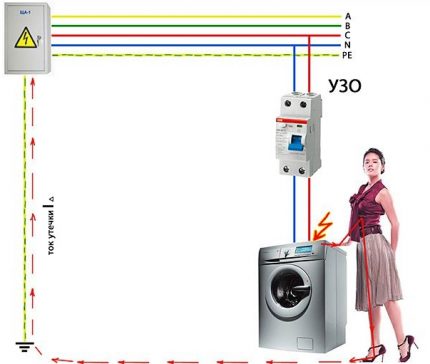
Electricity is supplied to low-current LED systems through a special step-down transformer. This appliance also needs to be installed outside the bathroom, i.e. away from a source of high humidity. Almost all modern LED lamps are equipped with a special ground terminal.
Do not neglect this method of protection. Even weak currents can be transmitted and accumulate on wet surfaces. And thanks to steam and condensation, any surface in the bathroom can become wet: walls, floor, profile structures, ceiling, furniture, appliances, etc.

An accidental touch can transfer the discharge of accumulated electricity to the human body, which in some cases can not only cause discomfort, but also lead to serious electrical injury.
Design and installation features
All of the above points must be considered before drawing up a design scheme bathroom lighting. Installation of LED devices will be taken into account in such a scheme.
Usually you need to decide on the main and additional lighting, provide for them switches, determine location of outlets for connecting various household appliances.
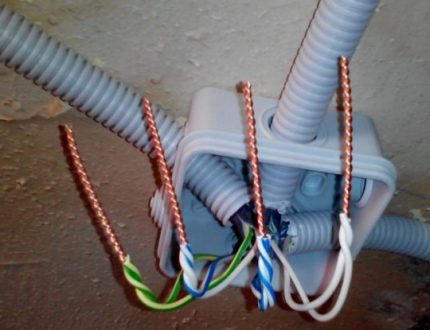
After that, a wiring plan is drawn up, the location of the junction boxes is determined, etc. From the apartment-wide electrical panel to the junction box of the bathroom, a cable with a cross section of 2.5 square meters is laid. mm It is suitable for lighting, as well as for lighting.
Separately lay a more powerful cable, designed for large equipment. It is recommended that different cables be color coded to prevent accidental confusion. After that, lay the wire to the switch.
If all lighting fixtures are turned on with one button, then it will be enough to use a conventional double wire.
But LED lighting in the bathroom is usually turned on separately from the main lighting. In this case, use a triple cable. If for lighting a switch with three keys is used, i.e. for three separate groups of fixtures, you will have to use two double cables. The cross section of such a wire should be 1.5 square meters. mm
After this, the cable is laid from the switch directly to the lighting fixtures.It is worth considering immediately that in the bathrooms it is not recommended to perform open wiring, so you will have to make strobes. In some cases, cable laying in a special plastic box is allowed.
Groups of auxiliary spotlights can be connected in parallel or in series. In the first case, it will be necessary to bring a separate power line to each lamp, in the second - to connect the lamps in one line one after another.
With a parallel connection, both cable consumption and the amount of work increase significantly. In the second case, everything is much simpler and cheaper.
But serial connection at the same time has several disadvantages. For example, if one lamp burns out, the supply of electricity to the entire circuit is interrupted. In addition, there is no way to diversify the LED backlight control system.
With a parallel connection, a burned-out element will not spoil the work of the rest of the lamps.
If there is a desire to arrange the possibility of turning on not all lamps at the same time, but only some, for example, every second lamp, then a parallel connection will be needed. This allows you to adjust the degree of illumination of the room.
If desired, the methods of connecting the fixtures can be combined, for example, the illumination of the mirror can be performed in a sequential way, and to decorate the bath or ceiling, use parallel connection, etc.
For this type of lighting fixtures, it is recommended to take a flexible stranded wire. A monolithic cable can impede the proper installation of fixtures by changing their position. Installation work with a flexible wire is usually not difficult to perform, but all twists should be carefully soldered and insulated.
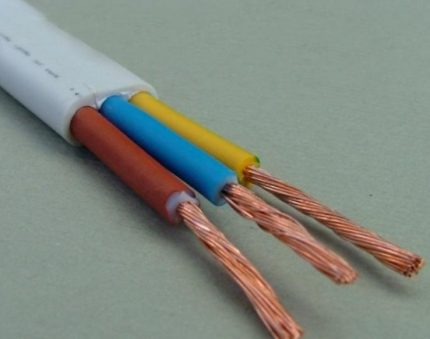
Usually for fixtures in the bathroom It is recommended to use wires of ШВВП, ПВС or similar types, in which the multi-wire cores are reliably covered by a layer of plastic from polyvinyl chloride.
Such protection will prevent the spread of fire in case of fire, prevent the formation of fungi, resistant to moisture.
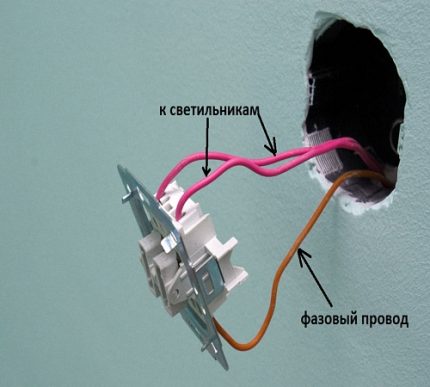
The lead-in cable is necessarily laid in a protective corrugated channel. For systems with grounding terminals, a four-wire cable is used, if such an element is missing, a three-core design will be sufficient. For spotlights in the canvas of the suspended ceiling, holes of a suitable size are made.
Outlets of the wires should be derived from them, two segments for each switch key, as well as two more wires for the reverse connection. To facilitate installation, it is recommended to leave the length of the outlets of about 15-20 cm. The ends of the outlets of the same color must be cleaned and connected to twist.
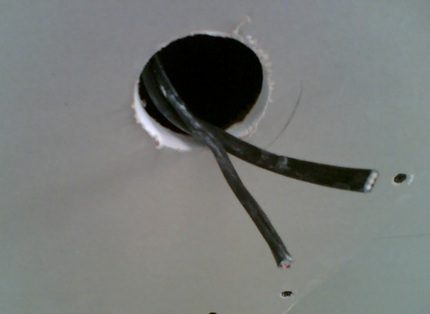
If you plan to connect to two-key switch, then three twists will come out of each hole. One of them will be common to all luminaires, and the other two - to the switch keys.
Accordingly, the first twist is attached to each lamp, and the rest - only to those elements that will be controlled by a certain key.
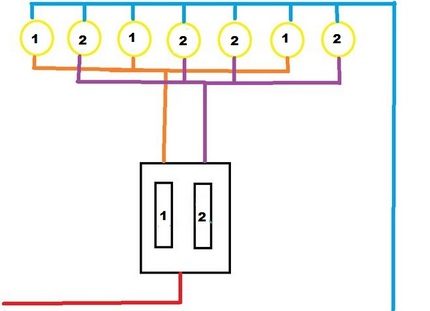
The common wire in the junction box will be connected to the neutral wire, and the phase should be brought to the switch and divided into two lines leading to the corresponding keys for different groups of lamps.
Useful LED Strip Information
This is an extremely convenient option. LED lighting, relatively inexpensive and easy to install. LED tapes, also called LED tapes, are polymer strips on which miniature LEDs with resistors are installed. The back side of the strip is usually provided with an adhesive layer.
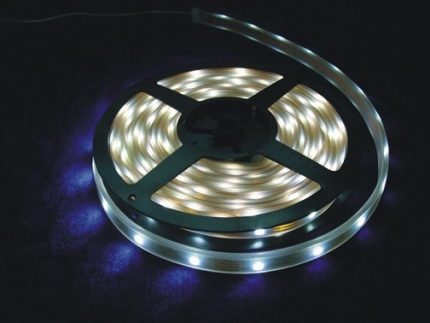
Installing such a tape is very simple: you need to glue the element in a suitable place and connect it to the power supply. The LED strip is divided into equal segments, each of which contains a certain number of LEDs connected in series with each other.
Places for a cut of this design have special designations. In bathrooms, only moisture-proof Led tapes marked IP44 can be used. Such elements vary in power. There is a purely decorative option, and strong LEDs that give a large amount of light.
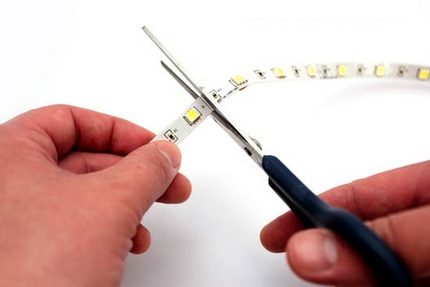
Distinguish single and multi-color LED ribbons. The latter have a slightly more complex device: in addition to the general output, there are three more - one for each color.
When choosing an LED strip, one should take into account such an indicator as the density of LEDs, i.e. their number per meter. In addition, the adhesive layer is not always needed, there are designs without it.
Soldering of single-color segments of the tape is soldered according to the “plus or minus” principle. When installing a multi-color tape, the areas connected by the indices V +, G, R, B are connected. To correctly select the power supply and controller, you need to calculate the length of the tape and multiply this figure by the power of one meter.
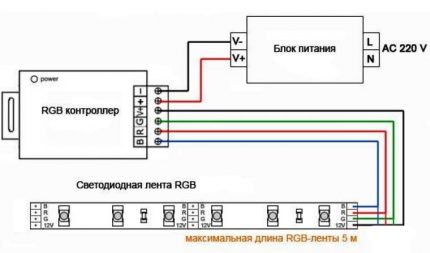
If the length of the structure exceeds 15 m, you will need to use another power supply, if the length is more than 30 m - two power supplies, etc. Connecting a mains wire is usually done to the pins, which are designated as N and L. For a multi-color ribbon, a controller is first installed.
If you need to bend the tape yourself when installing the LED lighting for the bath with your own hands, remember that the permissible bending diameter is 20 mm.
This type of backlight can be connected not only to a conventional switch, but also to LED strip dimmer. This device allows you to adjust the brightness of the LEDs. A convenient option for controlling the backlight can be a portable remote control.
When working with LED strip, you must strictly observe the polarity, protect the structure from mechanical damage, adhere to the rules of fire and electrical safety. If you intend to fix the tape on a metal base, you should first cover it with insulating material.
LED strip leaves wide scope for various effects when decorating the interior.
In addition to highlighting the mirror, you can use it:
- to decorate the ceiling around the perimeter;
- to effectively highlight small shelves;
- for registration of a mirror;
- to visually highlight the bath;
- for arranging a fake window, etc.
If you install the LEDs under the bath, you can achieve the effect of soaring design. A fake window illuminated by LED strip can become a stylish decoration of the interior and visually expand a small space.An interesting addition are the luminous nozzles for the tap and shower.

Such elements are quite simple to install, they do not need to be connected to the mains. Of course, you should use these methods sparingly so as not to spoil the appearance of the bathroom with unnecessary details. With an excessive number of elements, the backlight will simply merge into one obscure light spot.
Mounting mirror lights
If LED auxiliary lighting is planned in the bathroom, then it is impossible to ignore the mirror. Lamps located around this element will not only decorate the interior, but will also make its use more convenient. For LED mirror illumination, a tape is usually used, single or multi-color, of suitable length.
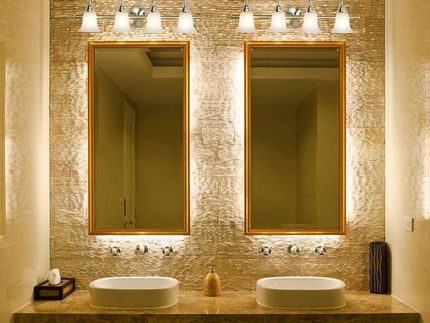
If the mirror is large, and the length of the tape exceeds five meters, you will have to stock up with connectors to connect individual segments of the tape. The design is connected via a power supply with a power that should be at least one and a half times greater than the power consumption of the used LED strip.
Of course, in the bathroom should only use waterproof LED strip. If it is necessary to cut it, then you need to do this by focusing on special tags made by the manufacturer, otherwise it can simply be ruined. Connect individual segments using connectors.
The tape can be glued directly on the surface of the mirror, or on the wall behind it, it all depends on what design effect is planned to be obtained. But in any case, before gluing the LEDs, the surface should be degreased. After that, the tape is simply connected to the power supply.
Conclusions and useful video on the topic
The series connection of LED lights is described here:
This video shows the parallel connection of LEDs:
Here, the installation procedure for spotlights is shown in detail:
LEDs are a convenient and cost-effective option for organizing the main and auxiliary lighting in the bathroom. If you deal with all the requirements and instructions, the installation of such elements can be done independently.
Do you have personal experience in designing and arranging lighting in the bathroom? Want to share your knowledge or ask questions about the topic? Please leave comments and participate in discussions - the feedback form is located below.

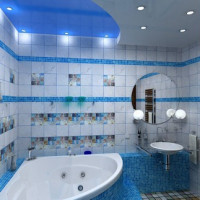 Proper lighting in the bathroom: design techniques + safety standards
Proper lighting in the bathroom: design techniques + safety standards 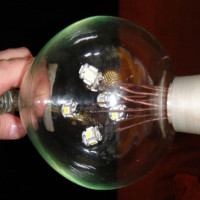 DIY LED lamp: scheme, design nuances, self-assembly
DIY LED lamp: scheme, design nuances, self-assembly 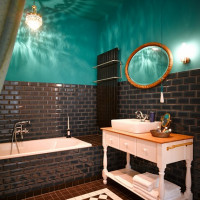 How to choose bathroom fixtures: which is better and why? Comparative review
How to choose bathroom fixtures: which is better and why? Comparative review 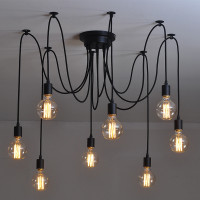 Assembly and installation of the chandelier: detailed instructions for installing and connecting with your own hands
Assembly and installation of the chandelier: detailed instructions for installing and connecting with your own hands 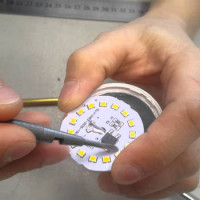 DIY LED lamp repair: the causes of breakdowns, when and how you can repair it yourself
DIY LED lamp repair: the causes of breakdowns, when and how you can repair it yourself  LED lamp layout: simple driver device
LED lamp layout: simple driver device  How much does it cost to connect gas to a private house: the price of organizing gas supply
How much does it cost to connect gas to a private house: the price of organizing gas supply  The best washing machines with dryer: model rating and customer tips
The best washing machines with dryer: model rating and customer tips  What is the color temperature of light and the nuances of choosing the temperature of the lamps to suit your needs
What is the color temperature of light and the nuances of choosing the temperature of the lamps to suit your needs  Replacement of a geyser in an apartment: replacement paperwork + basic norms and requirements
Replacement of a geyser in an apartment: replacement paperwork + basic norms and requirements
I’ll tell you as a person selling LED strip and light bulbs: scientists have proved that LED lighting is not suitable for home lighting, sooner or later my eyes get tired (even with constant occasional lighting, like in the bathroom), they are more likely for cafes, clubs and restaurants. So I highly do not recommend using LED lighting in residential premises, sooner or later it will bring discomfort.
Good afternoon, Alexander. Scientists, I recall, these lamps "invented." Subsequently, competition broke out between manufacturers - began, as Dorenko said, mutual wetting, or, in other words, the search for flaws.
When ordinary people discovered the discomfort of white light, scientists found a way to generate yellow light, similar in spectrum to sunlight. Such lamps no longer cause complaints.
LED strips are available in two types: open and closed. The latter are placed in a transparent tube, they can be placed even in the shower. Monochrome and multicolor are also distinguished, with which you can imitate color music. Imagine, with proper imagination in the bathroom, you can arrange it so that you stop taking a shower. By the way, cabins with audio systems have been producing for a long time!
Well, for the shower with music, Alexander, the manufacturer is responsible - I mean the possibility of electrical injury. Over the five-year period that I worked at Energonadzor, I faced a fatal accident - a teenager took a receiver in the bathroom with makeshift speakers. The contact was bad, he began to correct the wiring without getting out of the bath. With this minuscule tension he was killed.
It is better to use a 12-volt tape for the bathroom. And so, yes, as Alexander already wrote above, if you want and skill, you can arrange a real light music. And of course, when buying an ice belt, you need to consider the degree of security. I would only recommend IP68 protection, i.e. fully sealed version, they can even be drowned. Well, I'm exaggerating this, of course, but at a distance of a meter under water - no problem.